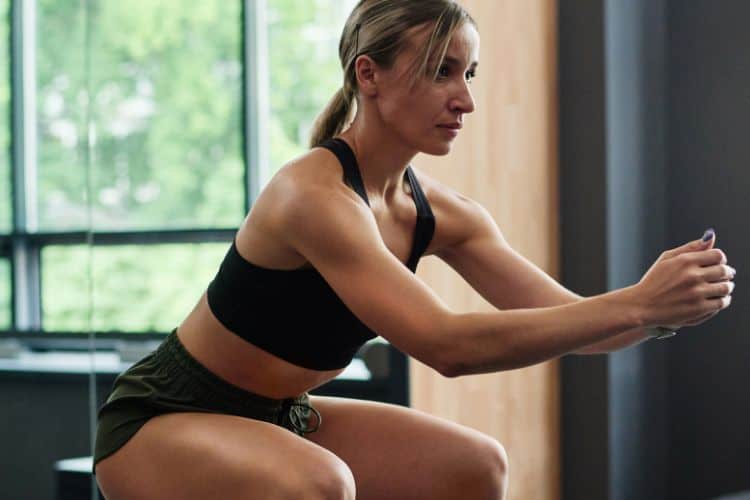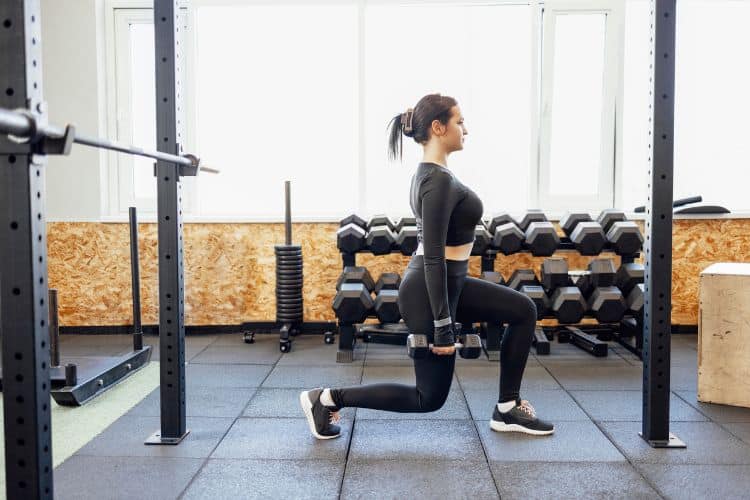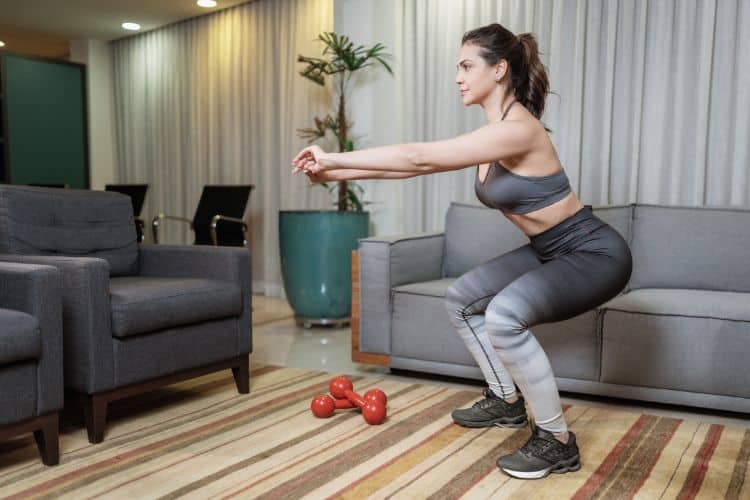Sign up for workout ideas, training advice, reviews of the latest gear and more.






If you’re looking for the fastest, most efficient way to transform your body without going to the gym, a 30-minute full body at-home HIIT workout routine is one of the best options. High-Intensity Interval Training (HIIT) delivers an incredible calorie burn, boosts your metabolism for hours after you finish (thanks to EPOC), and sculpts lean, strong muscles using only your bodyweight—or minimal equipment. This routine is perfect for busy women, beginners, or anyone wanting a powerful, time-efficient workout that fits seamlessly into your day.
This guide walks you step-by-step through a science-backed, beginner-friendly, and progression-ready 30-minute HIIT routine, along with warm-ups, cooldowns, tips for form, and scaling strategies to keep you improving over time.
A 30-minute HIIT session is long enough to challenge your entire body yet short enough to maintain maximum intensity. HIIT alternates intense bursts of exercise with short rest periods, forcing your heart rate to climb, muscles to engage, and energy systems to work harder than during steady-state cardio.
Here’s why 30 minutes is the sweet spot:
A HIIT session burns more calories in 30 minutes than many slower-paced workouts do in an hour. Even better—your body continues burning calories for up to 24 hours thanks to the afterburn effect.
This workout hits every major muscle group—legs, core, glutes, back, shoulders, arms—to create balanced strength and aesthetic definition.
You can do this entire routine with just your bodyweight. No gym, treadmill, dumbbells, or machines required—making it perfect for home, travel, or small spaces.
Unlike traditional cardio, HIIT blends:
strength
power
conditioning
balance
core stability
…giving you a complete training stimulus in one efficient session.
Your workout is organized into three phases:
Prepares joints, elevates heart rate, and activates muscles.
Four circuits. Each circuit includes 4 exercises, performed for 40 seconds on / 20 seconds rest.
Helps restore your heart rate and reduces soreness.
Set a timer and grab water—it’s time to sweat.
Warming up is essential for preventing injury and preparing your muscles for high-intensity movement. Perform each exercise for 30–45 seconds.
Lift the knees gently to get blood flowing.
Big circular motions loosen your shoulders and upper back.
Step forward and rotate knee outward, alternating sides.
Hamstring stretch meets core activation.
Quick foot taps raise your heart rate and prime the nervous system.
40 seconds work
20 seconds rest
Complete each circuit twice before moving to the next
Minimal rest between circuits (30–45 seconds)
These exercises strengthen your legs, glutes, and abdominals while elevating your heart rate.
A full-body movement that targets quads, glutes, and core.
How to do it:
– Sit back into a squat
– Stand up and drive right knee toward chest
– Alternate knee lift each rep
Benefits:
Boosts balance, coordination, and leg power.
Build strength and explosiveness.
How to do it:
– Step back into a lunge
– Push through front foot and jump slightly
– Switch legs
– Modify by removing the hop
A perfect core-plus-cardio move.
How to do it:
– Start in plank
– Jump feet out and in
– Keep hips steady
Modification: Step legs out one at a time.
Targets glutes, hamstrings, and lower abs.
How to do it:
– Lift hips in a bridge
– As you lower, reach opposite hand to opposite foot
– Alternate sides
Strengthen the shoulders, core, chest, and arms.
A compound strength and stability exercise.
How to do it:
– Perform a push-up
– Tap each shoulder
– Keep hips still
Modification: Drop to knees.
Great for toning arms at home.
How to do it:
– Use a stable chair or bench
– Bend elbows back, lower body
– Press up through arms
More controlled than the fast version—focuses on core tension.
How to do it:
– Draw knee to elbow
– Keep abs tight
– Move slowly with intention
Strengthens the shoulders, core, and legs.
How to do it:
– Start standing
– Fold forward
– Walk hands out to plank
– Walk back and stand
This circuit drives maximum calorie burn.
One of the most effective total-body cardio exercises.
How to do it:
– Squat
– Place hands on floor
– Step or jump back
– Push-up (optional)
– Return to stand and jump
Lift knees high and pump arms.
Tip:
Stay on the balls of your feet and keep the pace quick.
Great for agility and leg strength.
How to do it:
– Shuffle right
– Touch floor
– Shuffle left
– Repeat
Targets upper abs, obliques, and hip flexors.
How to do it:
– Bring elbow to opposite knee
– Keep core engaged
– Move with controlled intensity
Finish strong with one last challenge.
A lower-body strength burner.
How to do it:
– Pulse twice at the bottom
– Jump upward
– Repeat
Modification: Remove jump.
Adds intensity to your upper body challenge.
How to do it:
– Push-up
– Extend one arm forward
– Alternate arms
Targets obliques and deep core muscles.
How to do it:
– Sit back
– Twist side to side
– Lift feet to advance
A brutal but effective core finisher.
How to do it:
– Hold hollow body for 20 seconds
– Switch to fast flutter kicks for 20
– Rest 20 seconds
Cooling down is essential for breathing recovery and muscle relaxation.
Lengthens hamstrings and lower back.
Great after jumping or squatting.
Relieves tension in spine and core.
Opens tight shoulders after push-ups and planks.
Focus on slow inhale and long exhale to lower heart rate.
For best results:
2–4 times per week
Allow at least one rest or low-intensity day between sessions
Pair with walking, yoga, or strength training for balanced fitness
Consistency matters more than perfection—30 minutes just a few times a week is enough to see real transformation.
Never sacrifice technique for speed.
The effectiveness of HIIT depends on pushing during the work periods.
Short bursts of intensity dehydrate the body quickly.
Modify burpees, push-ups, and jumping moves if needed.
Time yourself, count reps, or record your heart rate.
Protects your wrists, knees, and back.
– Add ankle weights
– Add dumbbells
– Increase work intervals
– Reduce rest
Your body adapts fast—so keep challenging it.
HIIT is scientifically proven to torch calories faster than steady-state cardio.
Bodyweight moves build strength without bulking.
EPOC — excess post-exercise oxygen consumption — keeps your body burning fat even after the workout.
The intervals push your heart to become stronger and more efficient.
Perfect for home, dorms, or travel—no equipment needed.
A 30-minute full body at-home HIIT workout routine is a powerful and efficient way to stay fit, burn fat, and build strength—no gym membership required. Whether you’re a busy professional, a mom with limited time, or someone returning to exercise, this routine delivers maximum results in minimal time.
Commit to this workout three times a week, track your progress, and adjust intensity as you become stronger. Small, consistent effort leads to extraordinary transformation.
If you’re looking to take your fitness journey further, you’ll definitely want to explore other great content here on Women’s Fit Club. For instance, check out our 45-Minute No-Excuses Home Workout (No Equipment Needed) which pairs perfectly with this 30-minute HIIT routine. For an upper-body focus, you’ll love the 20-Minute HIIT Biceps Blast: Maximize Growth & Burn Fat. Want a quick full-body burst? Try the 20-Minute Full Body Power HIIT Workout for Maximum Fat Burn. Need core and calisthenics options? The 30-Minute Full Body Calisthenics Workout for Absolute Beginners is ideal. Lastly, if you’re in the mood for a shorter strength-focused session, the 10-Minute Full Body Strength Workout (No Equipment Needed) offers a quick hit. These posts work beautifully together to build a versatile, time-efficient fitness regimen you can cycle through weekly.
Stay up to date on the latest women’s health, fitness and lifestyle trends and tips.